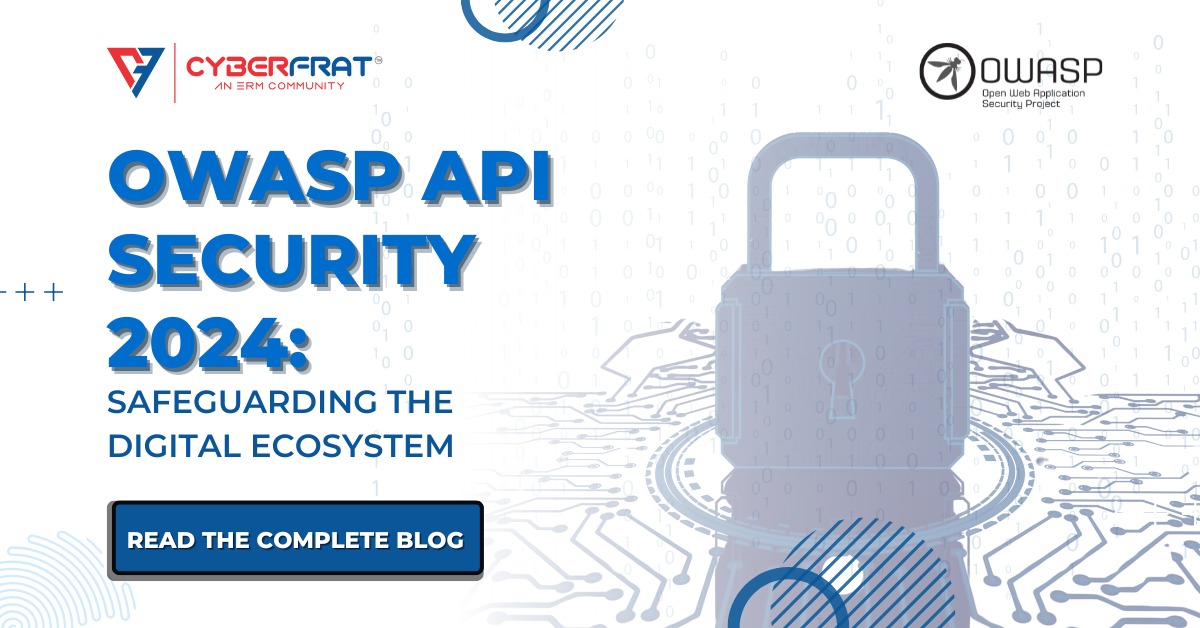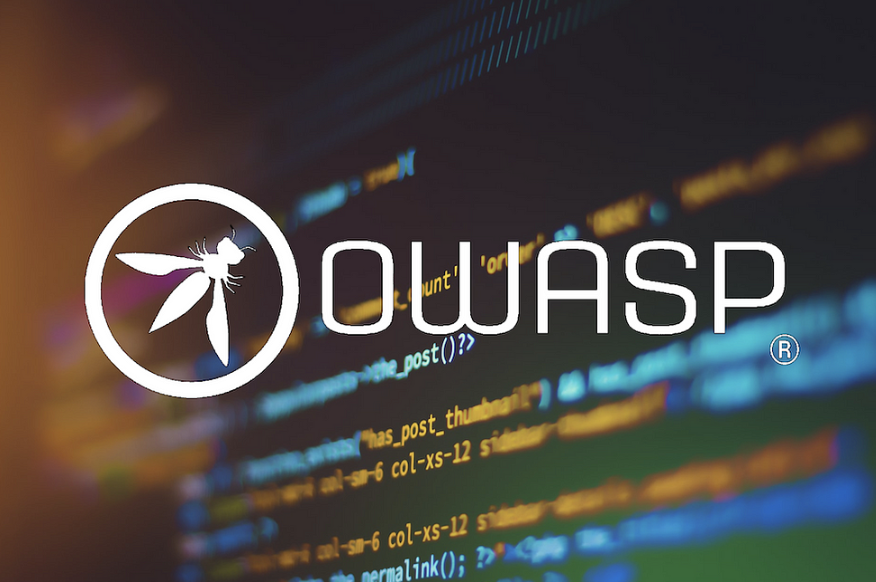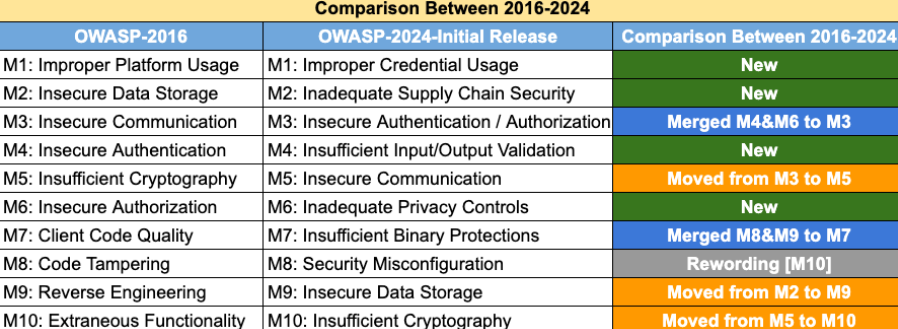
APIs (Application Programming Interfaces) have become the backbone of modern digital ecosystems, enabling the seamless integration of applications, services, and devices. However, with the increasing reliance on APIs comes the growing risk of security vulnerabilities. To address these risks, the Open Web Application Security Project (OWASP) regularly updates its API Security Top 10 list, highlighting the most critical security concerns for APIs. In this blog, we’ll explore the OWASP API Security Top 10 for 2024, discuss their significance, and provide guidance on how to protect your APIs in this evolving threat landscape.

The Open Web Application Security Project, or OWASP, is a globally recognized nonprofit organization dedicated to improving the security of software. Founded in 2001, OWASP’s mission is to make software security visible, so that individuals and organizations can make informed decisions about true application security risks.
OWASP is best known for its flagship projects, including the OWASP Top 10, which highlights the most critical security risks to web applications, and the OWASP API Security Top 10, focused on API vulnerabilities. These projects are the result of extensive research, data collection, and contributions from a global community of security professionals.
API security refers to the practices and tools designed to protect Application Programming Interfaces (APIs) from malicious attacks, data breaches, and other threats. As APIs become the backbone of modern applications — enabling communication between different software systems — they also become a prime target for attackers looking to exploit vulnerabilities.
Securing APIs is critical because they often expose sensitive data and services to external users and other applications. A successful attack on an API can lead to unauthorized access to data, service disruptions, and potentially severe financial and reputational damage for organizations.
The OWASP API Security Top 10 is a list of the most critical API security risks, based on research and data from real-world security incidents. The 2024 update reflects the latest trends in API attacks and provides insights into emerging threats.
BOLA remains the top risk in the 2024 list, emphasizing the critical nature of object-level authorization. Attackers exploit flaws in authorization mechanisms to access unauthorized resources, leading to data breaches and unauthorized actions.
Mitigation:
1. Implement proper authorization checks at every API endpoint.
2. Ensure that users can only access resources they are authorized to interact with.
3. Regularly test APIs for authorization flaws using automated tools.
Authentication weaknesses allow attackers to impersonate legitimate users. This risk often arises from poor implementation of authentication mechanisms, such as weak passwords, lack of multi-factor authentication (MFA), and insecure token management.
Mitigation:
1. Enforce strong password policies and use MFA.
2. Securely store and manage authentication tokens.
3. Implement rate limiting and account lockout mechanisms to prevent brute-force attacks.
APIs often expose more data than necessary, providing attackers with opportunities to harvest sensitive information. This issue is particularly prevalent when APIs return entire data objects instead of just the required fields.
Mitigation:
1. Review API responses to ensure only necessary data is returned.
2. Implement data filtering and masking to protect sensitive information.
3. Adopt a “least privilege” approach to data access.
APIs without proper rate limiting are vulnerable to abuse, such as denial-of-service (DoS) attacks. Attackers can overwhelm the API by sending a large number of requests in a short period, disrupting service availability.
Mitigation:
1. Implement rate limiting to control the number of requests an API can handle.
2. Use API gateways and load balancers to distribute traffic and prevent overload.
3. Monitor API usage and adjust rate limits as needed.
Function level authorization issues occur when users can access functions or actions they should not have permission to execute. This can lead to unauthorized changes, such as altering user roles or accessing administrative functions.
Mitigation:
1. Apply role-based access control (RBAC) to restrict access to functions based on user roles.
2. Validate user permissions before executing any critical function.
3. Regularly audit and test API endpoints for function-level authorization flaws.
Mass assignment vulnerabilities occur when attackers manipulate API requests to assign values to properties, they shouldn’t have access to, leading to unauthorized changes in the application.
Mitigation:
1. Implement whitelisting to control which properties can be assigned by the API.
2. Validate and sanitize incoming data to prevent unauthorized property assignment.
3. Use frameworks that provide built-in protection against mass assignment.
Security misconfigurations are a common issue in API deployments. They include insecure default configurations, unnecessary features enabled, and improper security settings, which attackers can exploit to gain unauthorized access.
Mitigation:
1. Regularly review and update API configurations to ensure they follow security best practices.
2. Disable unnecessary features and services.
3. Use automated tools to scan for and correct security misconfigurations.
Injection attacks, such as SQL injection and command injection, remain a significant threat to APIs. Attackers inject malicious code into API requests, which can be executed by the server, leading to data breaches and system compromise.
Mitigation:
1. Use parameterized queries and prepared statements to prevent SQL injection.
2. Sanitize and validate all user inputs to prevent code injection.
3. Implement input validation and output encoding to protect against injection attacks.
Improper asset management occurs when organizations fail to properly manage their API inventory. This includes exposing outdated, undocumented, or insecure API endpoints that attackers can exploit.
Mitigation:
1. Maintain an up-to-date inventory of all API endpoints.
2. Decommission and remove outdated or unused APIs.
3. Regularly review and update API documentation and security measures.
Without adequate logging and monitoring, detecting and responding to API attacks becomes challenging. Insufficient logging can prevent organizations from identifying and mitigating security incidents in a timely manner.
Mitigation:
1. Implement comprehensive logging for all API requests and responses.
2. Monitor API traffic for suspicious activity and potential attacks.
3. Use security information and event management (SIEM) tools to analyze and respond to security incidents.
The 2024 update to the OWASP API Security Top 10 introduces several changes that reflect the evolving nature of API threats. Here are the key differences:

OWASP API 2023:
In the 2023 list, injection vulnerabilities (such as SQL injection, command injection) were highlighted as a significant concern. These vulnerabilities allow attackers to inject malicious code or commands through API requests, potentially compromising the entire system.
OWASP API 2024:
In 2024, the focus has shifted towards authorization issues, particularly Broken Object Level Authorization (BOLA) and Broken Function Level Authorization. While injection attacks remain a threat, real-world data has shown that authorization flaws are more frequently exploited, leading to severe breaches.
Real-Life Example: In 2023, a major financial institution was breached due to a BOLA vulnerability in its API. Attackers exploited this flaw to access other users’ financial data by manipulating object identifiers. This breach underscored the need for robust authorization mechanisms, leading to the increased emphasis in the 2024 update.
OWASP API 2023:
Mass Assignment vulnerabilities were not explicitly listed in the 2023 OWASP API Top 10. While the concept was recognized, it did not have the prominence it gained in 2024.
OWASP API 2024:
Mass Assignment has been explicitly added to the 2024 list. This vulnerability occurs when attackers manipulate API requests to update fields they shouldn’t have access to by exploiting misconfigured endpoints that blindly accept all user inputs.
Real-Life Example: In late 2023, a tech startup suffered a breach when an attacker exploited a Mass Assignment vulnerability. The attacker was able to change their user role to an administrator by including additional parameters in the API request. This led to unauthorized access to sensitive internal systems, prompting the recognition of Mass Assignment as a top API risk in 2024.
OWASP API 2023:
Security Misconfiguration was listed as a key issue in 2023, but it was more generalized, encompassing a wide range of potential misconfigurations.
OWASP API 2024:
In 2024, the focus on Security Misconfiguration has been refined to address specific trends seen in recent API attacks. The updated list emphasizes the need for secure default settings, the importance of disabling unnecessary features, and the risks associated with overly permissive configurations.
Real-Life Example: A 2023 breach at a healthcare provider was traced back to a misconfigured API that exposed patient records. The API had default settings enabled that allowed broad access to sensitive data without proper authentication, highlighting the dangers of security misconfiguration.
OWASP API 2023:
The 2023 list tended to group certain vulnerabilities under broader categories, which sometimes obscured specific risks.
OWASP API 2024:
In response to feedback and evolving threats, the 2024 update introduces more granular categories. For example, Insufficient Logging and Monitoring has been given greater prominence, reflecting the increasing importance of detecting and responding to API attacks in real-time.
Real-Life Example: A 2023 incident involving a large e-commerce platform showed that insufficient logging allowed attackers to maintain persistence within the system for months. The attackers exploited API vulnerabilities, and because the logging was inadequate, the breach went undetected for an extended period. This incident pushed the importance of logging and monitoring to the forefront in the 2024 update.
OWASP API 2023:
The 2023 list included general guidance on API security but did not specifically address cloud-related risks in detail.
OWASP API 2024:
With the rapid adoption of cloud services, the 2024 update includes more explicit guidance on protecting APIs in cloud environments. This includes securing access to cloud metadata services and preventing cloud misconfigurations that can lead to significant breaches.
Real-Life Example: The 2024 update was influenced by incidents like the Capital One breach, where an SSRF (Server-Side Request Forgery) vulnerability in the API was used to access AWS metadata services. This allowed the attacker to obtain credentials and ultimately compromise vast amounts of sensitive data. The breach emphasized the need for cloud-specific API security measures.
The OWASP API Security Top 10 for 2024 highlights the shifting landscape of API threats, emphasizing the growing importance of authorization, mass assignment vulnerabilities, and cloud-specific risks. As APIs continue to play a critical role in modern digital ecosystems, securing them against evolving threats is more vital than ever.
For professionals, staying ahead of these trends means regularly revisiting your API security practices, integrating the latest insights from the OWASP API Security Top 10, and continually testing and refining your defences. By doing so, you can safeguard your APIs, protect sensitive data, and ensure the resilience of your digital services in an increasingly interconnected world.
Stay tuned for more insights and tips in our Cyber Security World with CyberFrat
For more Visit our website https://learn.cyberfrat.com/